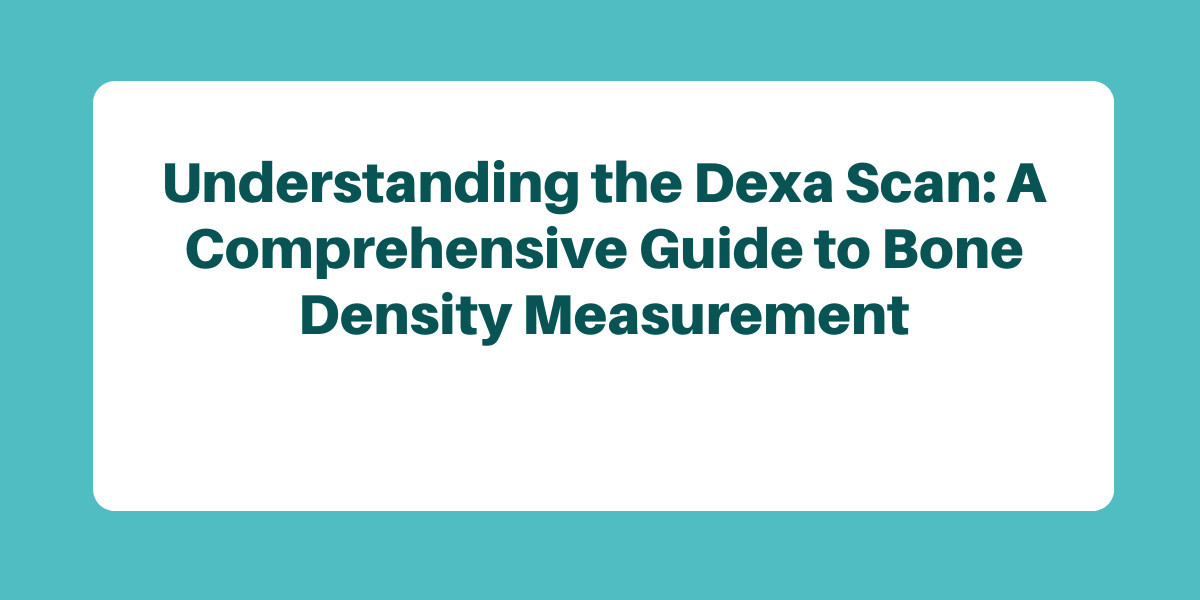In the realm of healthcare, early detection and prevention are paramount. One area where this is particularly true is in the assessment of bone health. Osteoporosis, a condition characterized by fragile bones and an increased risk of fractures, affects millions worldwide, especially women and the elderly. To combat this silent disease, medical professionals often turn to a diagnostic tool known as the Dexa Scan.
What is a Dexa Scan?
Dual-energy X-ray absorptiometry, abbreviated as Dexa or DXA, is a non-invasive imaging technique primarily used to measure bone mineral density (BMD). This imaging procedure is most commonly employed to diagnose osteoporosis, assess fracture risk, and monitor changes in bone density over time. Dexa scans are painless, quick, and expose patients to minimal levels of radiation, making them a preferred method for bone density evaluation.
How Does it Work?
During a Dexa scan, the patient lies comfortably on a table while a machine emits low-dose X-rays that pass through the bones being examined. The amount of X-ray energy absorbed by the bones is then measured by a detector. By analyzing the differences in absorption between the two X-ray beams of different energy levels, the Dexa machine can calculate bone mineral density.
The results of a Dexa scan are usually reported in two values:
T-score: This compares an individual's bone density to that of a healthy young adult of the same sex. A T-score above -1 is considered normal, between -1 and -2.5 indicates osteopenia (low bone density), and -2.5 or lower signifies osteoporosis.
Z-score: This compares an individual's bone density to that of others in their age group, sex, and ethnicity. A Z-score within the normal range indicates bone density appropriate for age, while a score significantly below the expected range may suggest other underlying health conditions.
Who Should Get a Dexa Scan?
While Dexa scans are commonly associated with older adults, they may be recommended for individuals who:
- Are postmenopausal women and older men
- Have a personal or family history of fractures
- Have conditions or take medications known to affect bone health, such as long-term corticosteroid use or hyperparathyroidism
- Are undergoing treatment for osteoporosis to monitor effectiveness
- Experience unexplained back pain or height loss
Benefits and Limitations
The Dexa scan offers several advantages in the assessment of bone health:
- Early Detection: By identifying low bone density before fractures occur, Dexa scans enable early intervention and prevention strategies.
- Accuracy: Dexa scans are highly accurate and considered the gold standard for diagnosing osteoporosis.
- Minimal Radiation Exposure: Compared to traditional X-rays, Dexa scans involve minimal radiation exposure, making them safe for routine screening.
However, it's essential to recognize the limitations of Dexa scans:
- Limited Evaluation: While Dexa scans provide valuable information about bone density, they do not assess other factors contributing to fracture risk, such as bone quality or muscle strength.
- Cost and Accessibility: Access to Dexa scanning may be limited in some regions, and the procedure can be costly, especially without insurance coverage.
Conclusion
The Dexa scan plays a crucial role in the early detection, diagnosis, and management of osteoporosis and other bone-related conditions. By accurately measuring bone mineral density, Dexa scans empower healthcare providers to implement timely interventions aimed at reducing fracture risk and improving overall bone health. While it's not the only tool in bone health assessment, its widespread use underscores its importance in modern healthcare.
In conclusion, if you fall into one of the high-risk categories or have concerns about your bone health, consulting with a healthcare professional about the possibility of undergoing a Dexa scan could be a proactive step towards maintaining strong and healthy bones throughout life.



